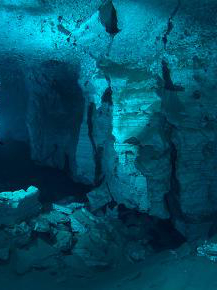Space radar tests continue
 Australian engineers are working on high-tech probes for human settlement in space.
Australian engineers are working on high-tech probes for human settlement in space.
Experts at RMIT University have received funding from the Australian Space Agency to develop a miniature radar device.
The prototype device, known as MAPrad, is just one tenth the size of existing ground penetrating radar systems, yet can see almost twice as deeply below ground – more than 100 metres – to identify minerals, ice deposits, or voids such as lava tubes.
It is hoped that the probe could be used on the Moon to support possible human settlement.
“MAPrad is smaller, lighter and uses no more power than existing ground penetrating radar devices, yet can see up to hundreds of meters below the surface, which is around twice as deep as existing technology,” says researcher Dr James Macnae.
“It is able to achieve this improved performance, even after being shrunken to a hand-held size, because it operates in a different frequency range: using the magnetic rather than the electric component of electromagnetic waves.
“MAPrad’s initial development was specifically focussed on facilitating drone surveys for mining applications, but it has obvious applications in space where size and weight are at a premium, so that’s where we’re now focusing our efforts.”
To further prove the technology’s usefulness for a range of Moon or Mars missions, the researchers will be seeking permission to scan one the world's largest accessible systems of lava tubes at the Undara caves in Far North Queensland, Australia.
Undara is an Aboriginal word meaning ‘long way’, in reference to the unusually long system of lava tubes that are located within the park.The tubes have diameters of up to 20 metres and some are several hundred metres in length.
RMIT University engineer, Dr Graham Dorrington, said they would traverse the park above the caves to detect the voids below, some of which have not been completely mapped yet.
“We know the dimensions of the main tubes, so comparison with surface scans to check accuracy should be possible,” he said.
“Undara will be an excellent testing site for us since it’s the closest thing on Earth to the lava tubes thought to exist on the Moon and Mars.”
Dr Dorrington said the system could be mounted on a space rover, or even attached to a spacecraft in low orbit, to monitor for minerals on near-future missions and for lava tubes on later missions.
“After the lava tube testing later this year, the next step will be optimising the device so as not to interfere or interact with any of the space rover or spacecraft’s metal components, or cause incompatible electromagnetic interference with communications or other instruments,” Dr Dorrington said.
“Qualifying MAPrad for space usage, especially on the Moon, will be a significant technical challenge for us, but we don't foresee any showstoppers.”







 Print
Print